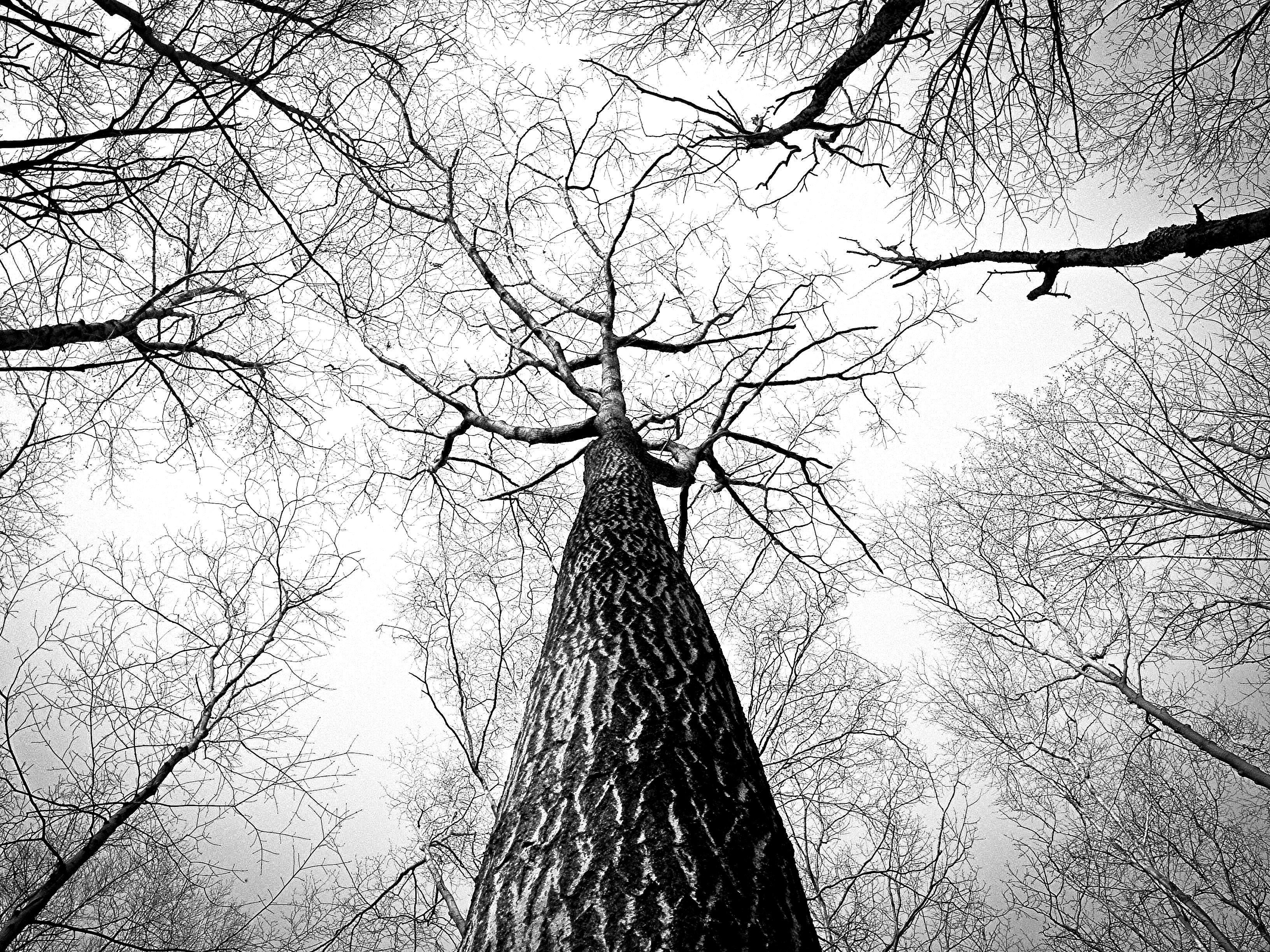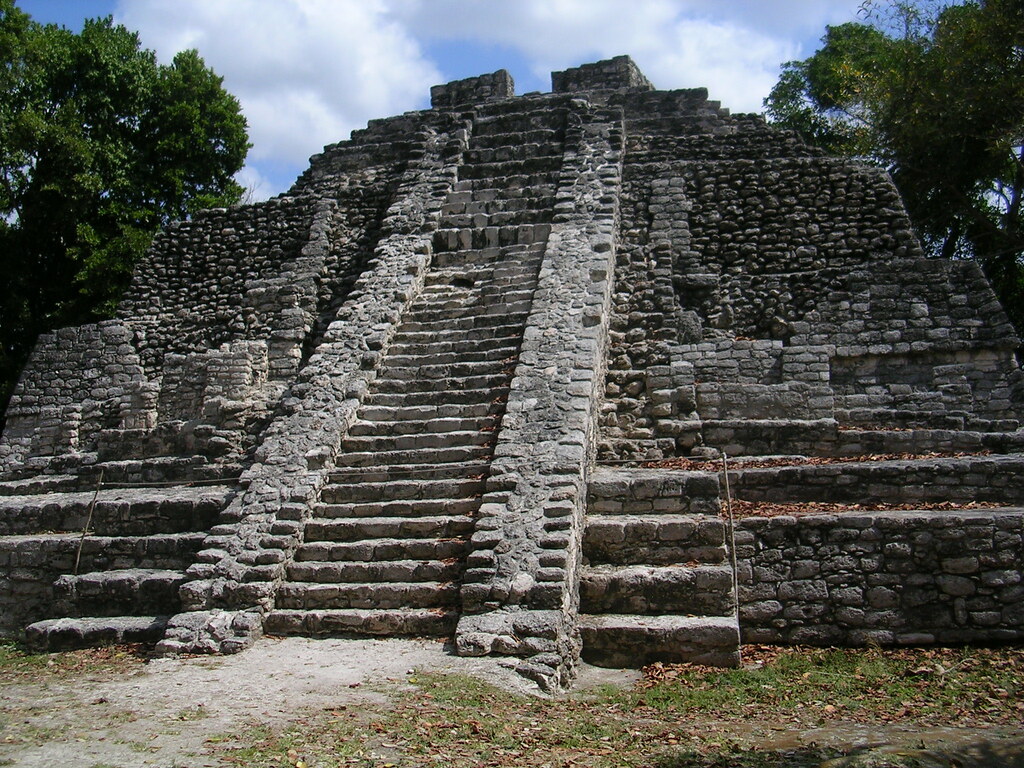Tree horror driven by human exploitation
of the natural environment
of the natural environment
Set in and around a secret Mayan temple, The Ruins primarily cautions against disturbing ancient ruins, applying a standard horror film motif. But the juxtaposition of vacationing Westerners with native Mayans protecting and, when necessary, quarantining the site introduces a potentially environmental message: colonizers who exploit the environment and its indigenous populations may face dire consequences in the eco-horror film. As an adaptation of screenwriter Scott Smith’s novel, it may also draw on contemporary environmental concerns. Entertainment Weekly’s G. Flynn asserts,
"Smith has tapped into our anxieties about global warming, lethal weather, supergerms—our collective fear that nature is finally fighting back—and given us a decidedly organic nightmare."
The Ruins also taps into some of the same fears Carter Soles (2014) broaches in his study of slasher films: “fears of environmental collapse, dwindling natural resources, and reprisals for their structural mistreatment of the working poor” (pg. 235). The focus on plant horror in The Ruins provides a way to globalize this fear.
The opening of The Ruins establishes a colonizer/colonized binary and introduces the film’s genre. Vines grow toward and grab a frantic woman as she cries beneath the ruins. A camera pan reveals the rainforest setting of the film. This greenery is broken by a poolside setting where students Jeff (Jonathan Tucker), Amy (Jena Malone), Stacy (Laura Ramsey), and Eric (Shawn Ashmore) celebrate spring break. A lost earring connects the American students with German tourist Mathias (Joe Anderson) and the ruins that open the film. Mathias invites them to join him and friend Dimitri (Dimitri Baveas) for a trek to this secret temple and, craving adventure, the four students agree. Their journey accelerates eco-conflicts that plant horror and its indigenous allies resolve.
The film first highlights how these students are colonizers unable to respond to the Mayans’ attempt to warn them about the deadly vines protecting the temple. Once the students make contact with the vines, Mayans surround them, halting their escape from the quarantined zone. The rest of the film focuses on these five students’ desperate and hopeless attempts to survive attacks from the Mayans and the sentient vines protecting the sacred ruins. Mathias is the first to go after breaking his back in the same pit where the woman in the film’s opening lost her life. Even though Jeff amputates his paralyzed legs when vines penetrate them, the monstrous plants consume Mathias. Stacy is next, when she drops into the pit and punctures her leg, which also becomes infected with vines. In agony, Stacy kills Eric and herself as if offering her body to the vines. During an escape attempt, the Mayans shoot Jeff, but Amy reaches the jeep and drives off. Her escape seems doomed, however, since a final shot shows vines moving beneath her skin. Here the film suggests a sort of “reverse colonization,” as violated nature turns the tables by infiltrating human borders and re-establishing the dominance of the vegetal. The film ends with more vacationers from the resort reaching the temple, continuing the horror.
 |  |
| Only the Mayan leader’s gun convinces the students they must climb the temple once they violate its vines. | Vines infest Mathias’s legs after he falls into the temple’s pit. |
 |  |
| Jeff amputates Mathias’s legs to halt the vines invasion. | Stacy and Amy enter the vine-infested pit. |
 |  |
| Stacy and Amy hear the vines mimicking their cellphone ring tones in the pit. | Infected by the vines, Stacy tries to cut them out, wounding and ultimately killing herself in the process. |
In The Ruins the rainforest and its indigenous inhabitants thwart the American and European students seeking to exploit them. In a symbolic gesture toward retribution, the film shows us what might happen if natre fought back against human oppressors who are unwilling to join the indigenous Mayans and become part of a biotic community. Instead, they have adopted an economic approach that encourages fair use politics that call for the exploitation of resources for human gain. The United Nations Environment Programme (UNEP 2015) highlights a few of the ways tourists exploit the environment, including commodification of cultural traditions and economic inequality. The tourists in The Ruins first highlight economic inequality in the typical resort area. When they choose to violate Mayan traditions, however, these spring-breakers ignite environmental disaster.
In reality, rainforest depletion has risen dramatically in the last year. A Rainforest Rescue (2015) campaign to save Mexican rainforests Los Chimalapas, home of the indigenous Zoque people, declares that after “a long history of defending their forest and its biodiversity against outsiders,” the Zoque are losing ground to “loggers and cattle ranchers [who] are crowding in while politicians turn a blind eye.” This degradation affects the world’s largest rainforests in Mexico and Central and South America, a subject explored more effectively in documentaries such as Alma (2011)and Green (2012). Although some of the colonizers have changed, exploitation of indigenous people and the natural world continues. In The Ruins, plants and the people they sustain fight back.




